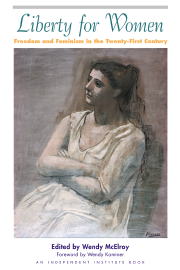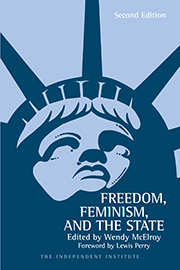Early Tuesday morning, two 20-year-old, white members of the Duke University lacrosse team were arrested for the rape and kidnapping of a black woman who was hired to strip at a party on March 13.
Their arrest is the culmination of extraordinary efforts by Durham District Attorney Mike Nifong. Even before DNA evidence had been analyzed, Nifong launched a weeklong media blitzkrieg. By his estimate, he gave “some 70 interviews” with the common theme that he believed the “victim.”
Why was he so determined to prosecute?
The motives of the Lacrosse team and their accuser are igniting flame wars across the Internet and shouting contests on nationwide television.
The arrested men Reade Seligmann and Collin Finnerty have been branded by name and by photograph as heinous criminals and racists; the word ‘potential’ gets lost in the sensationalism. Even before his indictment, Finnerty had been ‘outed’ by the New York Times for assaulting a man last November. If convicted, they each face a minimum sentence of sixteen years in prison.
Whether the young men are proven innocent or guilty, their lives may well be ruined.
Meanwhile, media and legal convention protects the identity and criminal history of their accuser. I’ve had the accuser’s name and a copy of her police record in front of me for over a week. But no one wishes to be so indelicate as to print these or to suggest the powerful motives that might have prompted a lie.
For example, if she had been arrested again (perhaps for public drunkenness in the wake of stripping), she may well have lost her children to the child welfare system.
Happily there is one accuser who can be trumpeted and whose motives can be dissected: Mike Nifong.
Shortly after the accusations appeared and before so much as a Grand Jury was convened, Nifong announced that he believed the ‘victim’ and, so, branded the accused—whoever they were—as guilty. At that point, however, Nifong’s statements of belief were nothing more than his personal opinion about an ongoing investigation.
Why did he make an almost unprecedented media stand?
On May 2, Nifong is up for re-election as District Attorney of Durham in a hotly contested race against two other Democrats: Freda Black and Keith Bishop.
Durham, North Carolina is a middle class town where the average annual income is approximately $47,000; about 44 percent of townspeople are African American. Durham is also home to the ivy-league Duke University where the average yearly tuition is approximately $43,000. There is a history of conflict between ‘the towns’ and ‘the gowns’, and it is ‘the towns’ who elect DAs. Crusading on behalf of a black townswoman raped by rich white Duke students might have looked like a perfect wave to ride into office.
Then the DNA analysis came back. Nifong had stressed the vital importance of this evidence, claiming “By next week, we’ll know precisely who was involved.”
None of the 46 DNA samples could be linked in any way to the alleged victim. Nifong then stressed that the lack of such evidence meant nothing even in a violent gang rape. He would rely, instead on medical evidence and the accuser’s identifications.
Then time-dated photos of the accuser emerged. Nifong had pointed to her injuries as proof of an attack. But the photos indicate that she arrived at the party in battered condition. By this point, however, Nifong was not talking to the media because his earlier words were coming back to haunt him.
How? Rule 3.8 (f) of the American Bar Association Rules of Conduct states, “except for statements that are necessary to inform the public of the nature and extent of the prosecutor’s action and that serve a legitimate law enforcement purpose, refrain from making extrajudicial comments that have a substantial likelihood of heightening public condemnation of the accused...”
Nifong committed prosecutorial misconduct in “heightening public condemnation of the accused.” At a time when he should have been investigating the possibility of two crimes—an alleged rape and a potentially false allegation—he acted as an advocate for one side.
Nifong also polluted the jury pool by lessening the impartiality of the community from which jurors will be drawn.
In debates leading up to the May 2nd election, DA hopeful Black pointedly refused to comment on the alleged rape because of a possible conflict of interest.
“If my campaign is successful, I may end up handling this case and I don’t want to jeopardize my ability to do so effectively and fairly by commenting without all the facts in hand.” The comment was a clear slam at Nifong.
DA hopeful Bishop expressed concern “about whether this is being politicized, whether Nifong and his group are just playing the public.”
’The public’ in question is ‘the town’ that has clamored for arrests. The influential Durham People’s Alliance has endorsed Nifong’s candidacy. Of the alleged rape, the People’s Alliance states that it “wholly supports the struggle of this young woman.”
The arrests go a long way toward ensuring his re-election.
Predictably, Nifong now wishes to work outside the public eye.
According to a local paper, Nifong recently emerged from a men’s room to find himself surrounded by news hungry reporters. Nifong complained, “I wish you could find me a way to give me my anonymity back.”
The time for shyness is long past.
There are three parties whom the wider public should scrutinize and exonerate if appropriate: the arrested men, their accuser, and District Attorney Nifong.









